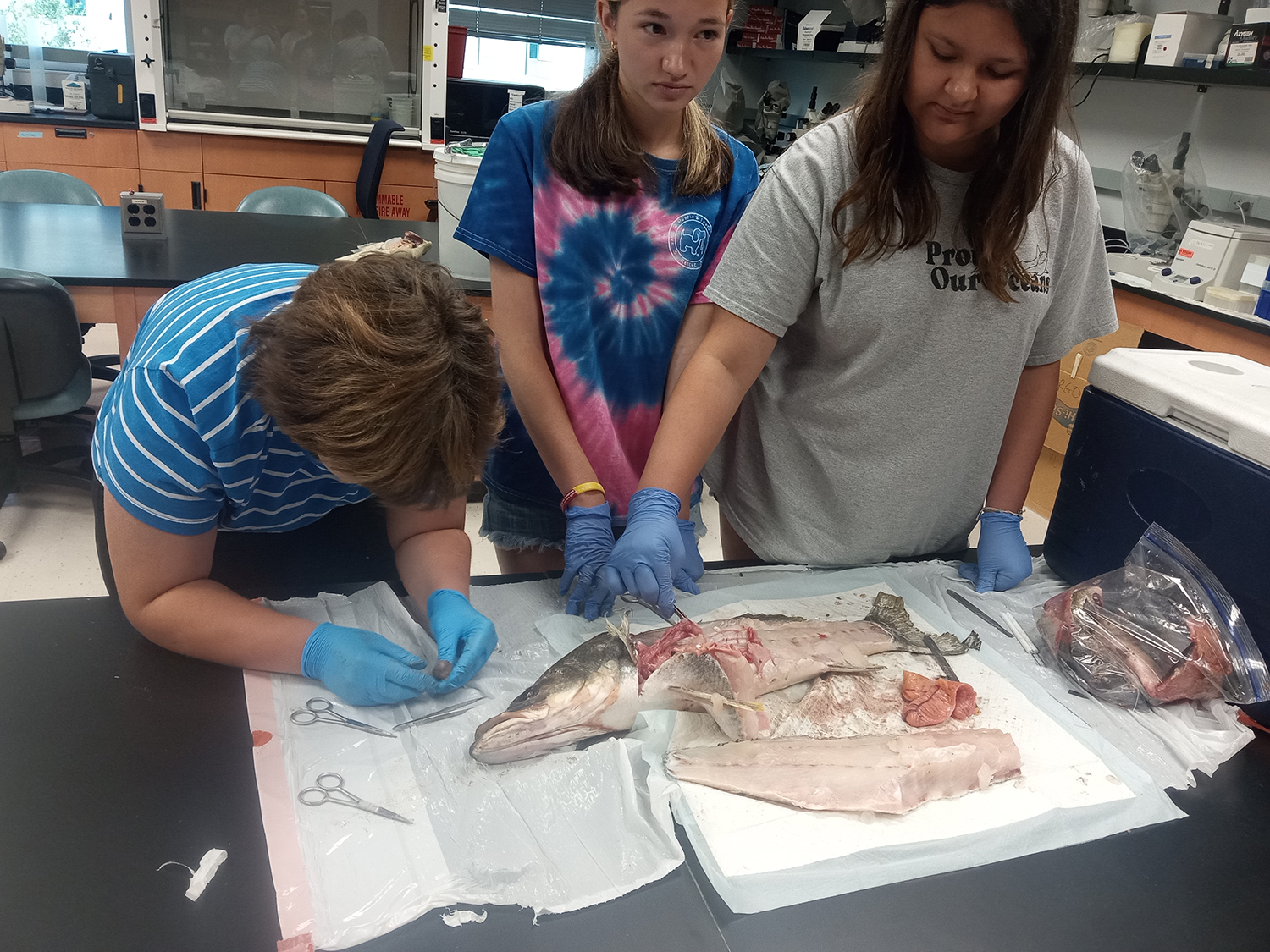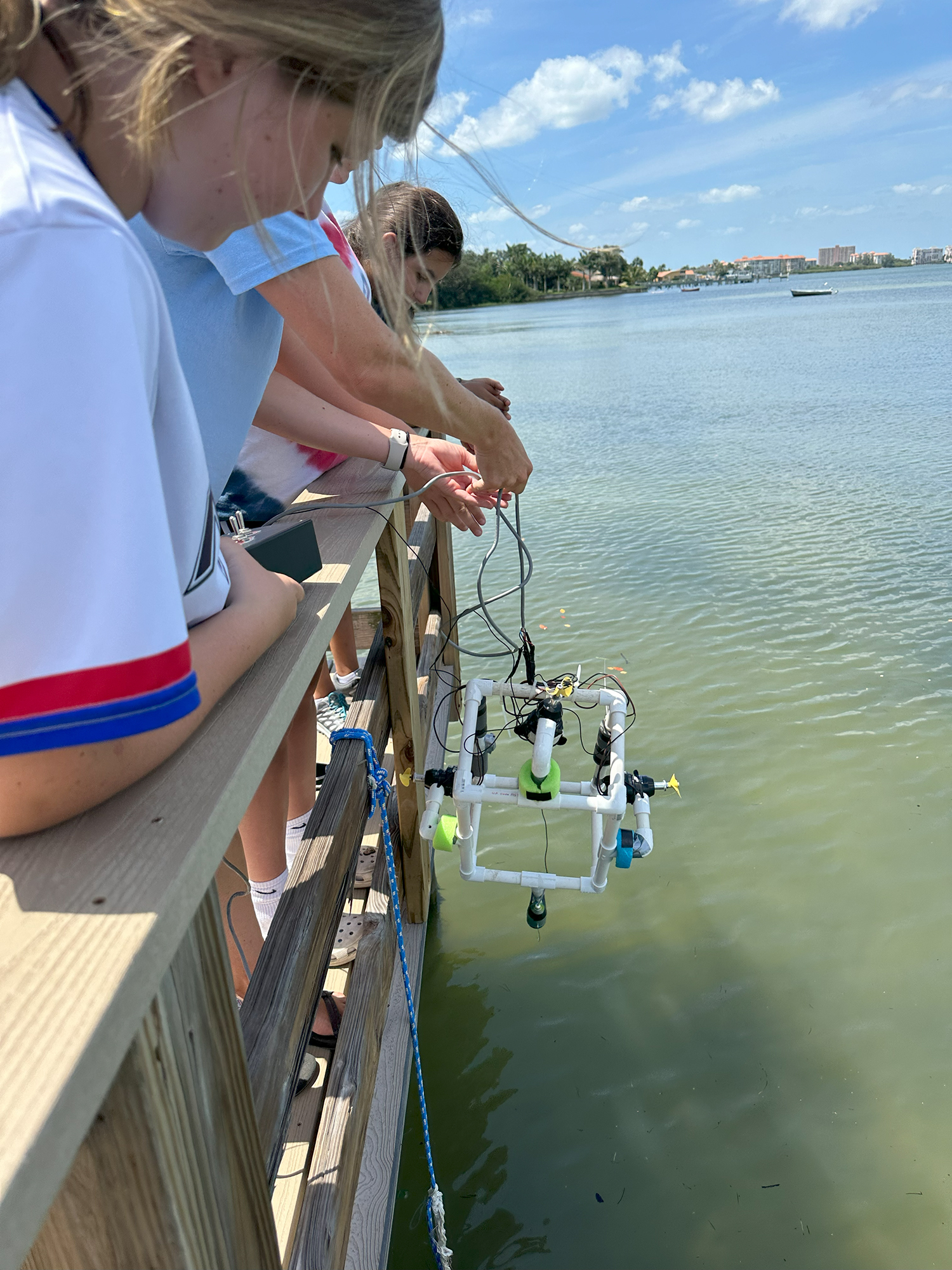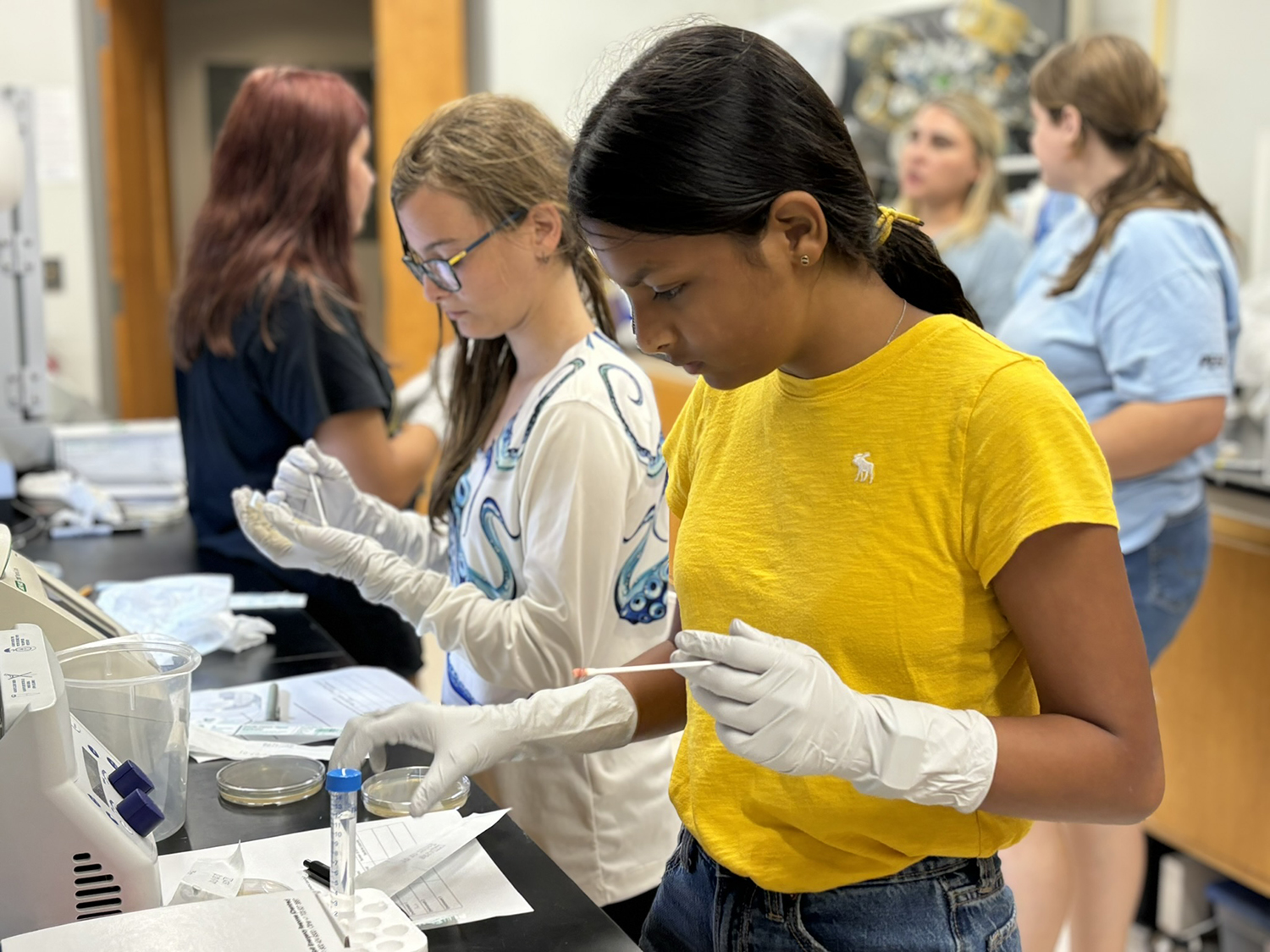Week 2 – Laboratory Activities, June 17-18
Savannah Ford-Myers, Peer
The fish ecology lab provides campers with the opportunity to learn about fish and how they impact the environment. To start the lab, the girls learned about what the morphology and characteristics of fish. Learning about different body, tail shapes and mouth positions allowed them to identify fish from the Tampa Bay area and infer what they eat and their habitats. The campers were then able to get hands-on and dissect fish. As they cut into the samples, campers identified different body parts, organs, and functions of the fish. Exploring the samples also allowed the girls to study the internal physiology of the fish and feeding patterns. On the second day of the lab, the campers were able to learn more about the ecology part of the lab. They learned about issues that come from overfishing, bycatch, and unsustainable fishing. This gave them insight on what we can do to help protect our ecosystem from fishing charters. Then the campers were able to use the data that was collected at Fort de Soto to calculate the biodiversity of the two different stages over many years. Calculating the biodiversity not only provides the girls insight into what ecologists study but it also teaches them how to study fish populations and how populations change over the years.

Haleigh Downes, Peer
Over the two days at the ocean sounds hydrophone lab, campers learned about ocean sounds and their importance. On the first day campers learned about acoustics by looking at vinyl records and learning how they work. The campers learned about soundwaves and their frequencies and amplitudes, and were introduced to how noises sounded like underwater by playing “guess the sound” game. Then the girls participated in “stirring up sound” lab which taught the campers how the speed of sound can be affected by temperature, obstacles, and the medium that the sound is transferred in. On the second day, campers were taught about hydrophones. Hydrophones are a microphone that can detect sound waves under water. The campers used an amplifier and headphones so they can listen and record what they heard underwater. This lab taught the campers why we study sounds underwater and how the temperature, depth, obstacles, and the medium can affect the speed of sound.
Maija Alksnitis, Peer
The ROV (Remotely Operated Vehicle) lab was conducted over the span of two days, during which the campers learned about ROVs, and then planned and created their own, with the goal of making an operable and water-worthy final product.
On the first day, the campers learned about the functions and use of ROVs and their main components. After getting an overview of ROVs, their task was to create one of their own, using a PVC pipe frame, floats, motors and a controller. Then the girls got to work, first planning and drawing and ROV and then beginning to make the frame. Along the way the girls had to decide how they would place the motors for maneuverability and how to make space for a camera. Some of the issues that they encountered was not being able to find PVC pipes of the right length, which was solved by measuring them and cutting them to the right length. Once the girls had constructed their frames, they now had to do the trickiest part; they had to solder the motors for their ROV to the cable that would connect them to the controller. None of the campers had ever soldered before, so this was an entirely new skill for them to learn. The campers did an amazing job with making sure everything was prepped before beginning the soldering process, something that had been a slight issue in past years. The girls soldered almost everything perfectly, only having to redo the soldering on one of the six motors, before they were able to go out and test their ROVs in the water. In the water, all the solders retained their waterproof seals, and all the ROVs worked successfully, all being maneuverable and successful. After testing their ROVs, the campers got to try out a professionally manufactured ROV before packing up and heading back.

Kayla Dudinsky, Peer
Campers started their mission as DNA Detectives by learning how scientists replicate DNA using PCR (otherwise known as a polymerase chain reaction!). They “made” DNA using Twizzlers and gummy bears, pairing nucleotide bases C and G (orange and red gummy bears) and A and T (yellow and green gummy bears). They then separated the two backbones and added new bases to turn the one segment of their DNA into two, replicating it! Lab leader Natalie then introduced them to the acronym EASI — the steps to PCR that helps identify what a sample of DNA belongs to. EASI stands for extraction, amplification, sequencing, and identification. Campers used this method in a simulation, where they took water samples containing environmental DNA or “eDNA” (paper confetti) and identified what species the eDNA belonged to. We ended the first day by swabbing different environments around the KORC building (including a lizard, fish guts, and the bottom of a shoe) and growing bacteria colonies on plates overnight. The next morning, campers got to see how their colonies grew by identifying the shape, size, and number of colonies, as well as view them under a microscope. Most of the bacteria were rod shaped. Overall, we learned a lot about eDNA and how microbiologists help us learn more about our environment through DNA replication and identification! P.S. – the environments that grew the most bacteria were the soil and algae on the pipe near the KORC pond!
